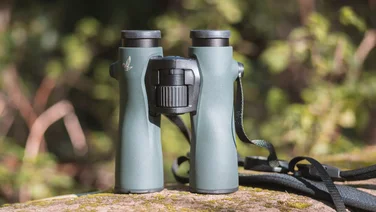To help us provide you with free impartial advice, we may earn a commission if you buy through links on our site. Learn more
- Editors picks
- How to buy the right camera for you
- The best cameras to buy in 2020
- 1. Canon EOS 5D Mark IV: A full-frame DSLR stunner
- 2. Sony A6400: Small and light, but packs a punch
- 3. Nikon Z7: The pro mirrorless camera to beat
- 4. Fujifilm X-T30: Ignore the retro looks, this is a mirrorless tour de force
- 5. Canon EOS 90D: The best all-round DSLR
- 6. Nikon D3500: The perfect DSLR for beginners
- 7. Canon EOS M6 Mark II: A brilliant portable option
- 8. Canon G7 X Mark II: The ultimate pocket-sized camera

Buying a camera can be daunting, with a huge range of shapes, sizes, specs and features to look for. Here, you’ll find everything from hulking semi-pro DSLRs to pocketable compacts at prices ranging from the highly affordable to the stratospheric. The good news is that the digital camera market has matured beautifully, so you might be surprised at how few compromises you need to make to bag a bargain.
Below, you’ll find our favourite cameras of 2020. If you’re not sure where to begin, you’ll also find our guide to buying the best camera for you.
Skip to:
Editors picks

Best mirrorless camera under £1,000 | Fujifilm X-T30
There’s just so much to love about this incredible little camera. The large, APS-C sensor produces great-quality images, and the camera looks and feels fantastic. Those dials aren’t just aesthetically pleasing, though: they make the camera really easy to use. A fabulous choice for anyone feeling hamstrung by their current kit and looking to upgrade.
Amazon
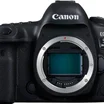
Best DSLR | Canon EOS 5D Mark IV
“Approaching perfection”. That was our verdict on the Canon EOS 5D Mark IV when we first reviewed it and our judgment stands. Canon’s full-frame sensor and 61 autofocus points combine for a camera that works fantastically in virtually all kinds of light. Compatibility with Canon’s famously wonderful range of professional lenses is the icing on the cake
Amazon
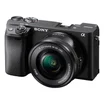
Best compact mirrorless camera | Sony A6400
Just how good can Sony’s mirrorless cameras get? The A6400 is a true welterweight at just over 400g, yet it can shoot 11fps, shoot 4K video in S-log mode and rocks an APS-C sensor capable of incredible images at a very wide range of ISO settings. Truly one for the frequent traveller.
Amazon
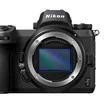
Best pro mirrorless camera | Nikon Z7
If mirrorless is truly the future of professional photography, the Nikon Z7 is a very good indicator of where things are headed. Small and light yet capable of truly incredible image quality, this is a camera that will suit virtually all types of photographer. Get battery life cracked, Nikon, and we’re yours.
Amazon
How to buy the right camera for you
Digital cameras have become much more varied. There’s now far more choice than the simple division between cheap compact models and expensive DSLRs, with a handful of bulky ultra-zoom cameras in the middle. From shoulder-sagging pro models to compacts that will fit in the pocket of your shorts, and from cameras that reward years of experience to cameras that will help the most fire-and-forget photographer get great images, our buyers guide will help you grab the best camera for you.
What kind of body should I get?
The modern camera market is divided into high-end compacts, super-zooms, mirrorless cameras and DSLRs, with each offering a different combo of pros and cons. A high-end combo, for example, will still offer a good number of manual modes and good image quality in fairly good light, while being extremely portable. The downsides: poorer battery life and worse image quality once the light dims. Ambitious photographers might also start looking jealously at photographers with interchangeable lens systems.
Superzoom cameras are similarly autological. By combining a relatively long lens with a very small sensor (see below), a superzoom camera can supply a degree of magnification beyond all but the hugest professional lenses. Modern computing power means theyre often capable of formidable frame rates too, so for those looking to branch into sports or wildlife photography without breaking the bank, a superzoom is often a great option. Manual modes will keep experienced photographers happy, but many of the drawbacks of the compact camera can be found here as well. As sensor size decreases, the capability of a camera to produce a decent quality image in poor light goes down. Theres actually a double whammy with superzoom cameras youll want to be using a quick shutter speed to get sharp images when zoomed in, so youll be shooting your camera at higher sensitivities more often.
With budget compact cameras edged out by smartphones, most people will have five basic choices: compact ultra-zoom, ultra-zoom, premium compact, compact system camera (CSC) and digital SLR (DSLR), with the latter now including high-end mirrorless models. The price points of all these cameras overlap, meaning choosing a camera is as much a matter of priorities as it is budget.
What size sensor should I get?
These days, sensor size rather than megapixel count is the differentiating factor between cameras at different prices. A small sensor brings with it a big magnification factor, making every lens you put in front of it longer. This is particularly pronounced on bridge cameras, where a combination of a relatively big lens and a very small sensor produces the kind of focal lengths professionals can only dream of.
The drawback? Small sensors have very tightly-packed pixel sites the tiny lenses on the sensor that gather light and translate it into data. These crammed-together pixels make for images that worsen rapidly as the sensitivity of the sensor is boosted for example, when the light is poor and you need a quick shutter speed. For better image quality, you need a larger sensor, which often means a DSLR or mirrorless camera is the answer.
DSLR and mirrorless cameras come with two sensor sizes. The first, smaller option is APS-C. These sensors measure in the order of 22.2 x 14.8mm and offer an excellent compromise between top quality and cost. They also offer advantages to wildlife and sport photographers, as they still boost the focal length of any lens you attach by about 1.5x. That means a 300mm lens has an effective focal length of about 450mm. The larger sensor will also get you shallower depth of field at all apertures, allowing you to shoot more artsy-looking frames.
The next stage is a Micro Four Thirds sensor. These are exclusively the preserve of mirrorless cameras and offer 2x focal length magnification, meaning a 300mm lens is equivalent to a whopping 600mm lens.
If youre looking to step up a level, the next sensor size youll find is full-frame. Here, the sensor in the camera is roughly the same size as a rectangle of old-school 35mm film, measuring about 36 x 24mm or roughly two times larger by area than an APS-C sensor. The larger sensor confers the same benefits as moving from a bridge camera to an APS-C camera: much better low-light performance and shallower depth of field. You do lose the benefit of focal length magnification, so youll need to spend more for bigger lenses if you want to shoot distant subjects.
Full-frame used to be the ultimate sensor size for consumers, but were seeing a small number of other choices coming it at the very high end. Medium-format mirrorless cameras, whose sensors measure a humungous 44 x 33 mm (or thereabouts), are beginning to present a threat to top-end professional DSLRs. The benefits of big sensors continue very, very tight depth of field and superlative image quality mean those who want to reproduce their work at very large scales should be looking here. The drawbacks are manifold, though: medium-format bodies are extremely expensive, as are lenses of sufficient quality to do them justice. Medium-format cameras also tend to offer relatively poor performance in areas unrelated to image quality, such as autofocus or continuous frame rate modes.
Are megapixels important?
Not so much these days. The more megapixels you have, the bigger your image will be and in theory the better it will print at large sizes. However, bunching lots of megapixels onto a sensor generally means reduced quality at higher sensitivities. So dont just buy a camera because it offers the highest resolution look at reviews to see how that resolution translates into real-world images.
What sort of lens do I need?
The beauty of enthusiast cameras is their interchangeable lenses the only kind of fixed-lens camera worth considering these days is a bridge camera. So the lens your camera comes with wont necessarily be the lens youre shooting with in two years.
Still, if youre starting from scratch, youll need a lens. The optical reach of a lens is described in millimetres, with the exact number a measurement of how far the lens that focusses the image is from the sensor. In practical terms, the smaller the number, the wider-angle the lens, with wide-angle lenses starting around 16mm. Telephoto lenses begin around 70mm, and super-telephoto lenses think the big lenses surrounding a football pitch kick off around 400mm. For everyday photography, a focal length in the order of 18-55mm a lens that starts pretty wide and then zooms in to just short of telephoto focal lengths is practical.
The next factor to look at is aperture size: the variable size hole in the lens through which light passes. Aperture size is described in f-stops, with numbers such as f/1.8, f/2 and f/2.8 indicating particularly large apertures. A lens with a larger maximum aperture can be used in lower light than a lens with a smaller aperture. 18-55mm starter lenses generally offer apertures of f/3.5-f/5.6. Lenses with two apertures stamped on the barrel get darker as they zoom in.
Our advice: for beginners, something in the order of 18-55mm is practical and user-friendly, and while kit lenses are never the last word in features, sharpness or low-light performance, theyre generally a great place to start for beginners.
How many body controls should I look for?
Many CSCs, all DSLRs and the larger ultra-zoom cameras tend to have more physical controls. Some people are put off by this, but there’s no need to be. These cameras still have fully automatic modes, so you don’t need to understand every single control to use them. However, as your experience grows, being able to reach for a clearly labelled button makes manual settings far easier to use than delving through a menu system, so you can keep your attention on the shot.
Most larger ultra-zoom cameras also include an electronic viewfinder (EVF), and they are often a clip-on option for mirrorless cameras. EVFs are little LCD screens that duplicate what’s shown on the main LCD screen. They’re usually easier to see in bright light and holding the camera up to the eye can make it easier to hold it steady. Some EVFs are much sharper than the main LCD screens, but most of the ones on ultra-zoom bridge cameras tend to be worse. DSLRs have a truly optical viewfinder that uses a mirror and a series of lenses to show you precisely what the lens can see. This has the drawback of not being able to preview exactly what your exposure will look like, but the significant upside is that battery life is superb on DSLRs because theyre not draining the battery to run a small LCD screen the whole time youre framing up.
Finally, the kind of memory card your camera accepts is important. The dominance of the SD card is being gradually elided, with XQD cards taking over. These cards offer excellent reliability, capacity and performance, but are expensive. Certain cameras offer twin memory card slots, allowing you to combine the storage capacities of two cards, or to save each image you shoot to both cards at once, giving you a little redundancy in the unusual event of a memory card becoming corrupted while its still in the camera.
I want to shoot video
Video is a non-negotiable these days, but how well a camera does it varies. There are questions to ask about features, such as what bit rates and frame rates are on offer, as well as whether a camera supports very high frame rates, which can be slowed down in post-production to create spellbinding slow-motion footage.
Most cameras shoot 4K video as a matter of course, which allows you to either join the in-crowd by producing 4K projects, or to produce Full HD video that can be more freely cropped. In our opinion, a camera that offers lots of options and a large sensor when it comes to shooting Full HD is preferable to a camera with more limited features that can shoot 4K.
Things to pay attention to are a choice of frame rates 24fps will make your footage look cinematic, while anything greater will offer smoother, cheaper-looking motion. Some cameras can shoot up to 120fps five times greater which, when slowed down, will offer amazing slow-motion action.
Audio should also be a consideration. Every camera that can shoot video will have a microphone maybe two, for stereo sound built-in. However, anything moving in or around the camera will be picked up. That means if the lens refocusses, or is running its image stabiliser, or if youre using the camera handheld, the sound will be picked up. This, apart from being deafening for your audience, is amateurish. A camera with a mic-in socket will allow you to attach an external microphone.
The best cameras to buy in 2020
1. Canon EOS 5D Mark IV: A full-frame DSLR stunner
Price: £2,549( | Buy now from Amazon

Canons 5D series of cameras has a superb track record and the Mark IV is the best of the bunch. The big changes this time around are an upgraded 61-point autofocus sensor and 4K video capture. Videos also benefit from Canons Dual Pixel tech for slick autofocus and a touchscreen to move the autofocus point while recording. Image quality lives up to highest expectations, with its 30-megapixel photos exhibiting less noise than those of the 22-megapixel 5D Mark III. Dual Pixel also improves live view autofocus performance.
As with previous 5D models, ergonomics are top-notch, with elegant controls and lots of information overlaid onto the big viewfinder. Its not cheap, but this is a camera that performs exceptionally across the board.
Canon EOS 5D Mark IV | Read our full review | |
|---|---|
| Key specs: 30.4-megapixel, full-frame sensor, 61 autofocus points, optical viewfinder, EF lens mount | Shutter and ISO speed range: 30sec 1/8,000th + bulb; 7fps burst mode; 50-102,400 ISO |
| Video modes: 720p at 100, 119.9fps; 1080p at 23.98, 25, 29.97, 50, 59.94fps; 4K at 23.98, 24, 25, 29.97fps | Connectivity: USB 3.0; 802.11b/g/n wireless; NFC; GPS; HDMI mini; audio in, out |
| Memory card: CompactFlash Type I, SD/SDHC/SDXC | Battery life: 900 shots |
| Dimensions: 151 x 76 x 116mm (WDH) | Weight: 800g without lens |
2. Sony A6400: Small and light, but packs a punch
Price: £904 | Buy now from Amazon

The A6400 is everything a consumer mirrorless camera should be. It weighs under 500g and, with the right lens attached, will fit in a pocket. But that portability doesnt mean it lacks photographic potential. 11fps burst shooting, superb image quality and compatibility with a vast range of E-mount lenses means this is a piece of kit far more serious than its diminutive size implies.
Its 24.2-megapixel sensor returns great images, and you can push the ISO reasonably high before youll start to see degraded images. Its also liberally festooned with controls, which means experienced photographers will manage to make it do what they want. The viewfinder and rear monitor both offer quality that befits the A6400s relatively high price, and other niceties, such as Wi-Fi and an outstanding 4K video mode, are the icing on the cake.
Sony A6400 | Read our full review | |
|---|---|
| Key specs: 24.2-megapixel, APS-C sensor; 425 autofocus points; 3in monitor, 0.39in viewfinder; E-mount lens mount | Shutter and ISO speed range: 30sec 1/4,000th + bulb; 11fps burst mode; 100-102,400 ISO range |
| Video modes: 1080p at 24, 25, 50, 60, 100fps; 4K at 24, 25, 30fps | Connectivity: micro-USB; 802.11b/g/n wireless; Bluetooth; NFC; micro-HDMI; audio in |
| Memory card: SD/SDHC/SDXC, Memory Stick PRO Duo | Battery life: 410 shots |
| Dimensions: 120 x 60 x 67mm (WDH) | Weight: 403g without lens |
3. Nikon Z7: The pro mirrorless camera to beat
Price: £3,259 | Buy now from Amazon

A great study in what happens when a manufacturer pushes out the proverbial boat, the Nikon Z7 might be the greatest consumer camera you can buy at the moment. Wed expect it to be in contention, given that price, but its only once you start to use it that you appreciate just how good it is.
It takes incredible images, of course. Its 45.7-megapixel, full-frame sensor, complete with 493 autofocus points, takes some tripping up before you start returning duffers, and its 4K video mode and high-speed Full HD movie mode all combine for a camera that will return sensational shots time after time.
Its a usable little beast as well. It weighs under 700g yet is weather-sealed, with body controls that are easy to get your fingers around. Lens-wise, Nikons range of Z-mount lenses has made a relatively slow start but theres a growing number of options, and the FTZ adapter (check that your Z7 will come with one) allows compatibility with Nikons famed F-mount options.
Its not cheap, of course, and at this price the Z7 is in competition from some pretty serious options, including the pro options from Canon, Sony and Nikon. But if you want a pro-spec camera that wont weigh you down, can live with slightly impaired battery life and a single memory card slot, the Z7 will delight for years to come.
Nikon Z7 | Read our full review | |
|---|---|
| Key specs: 45.7-megapixel, full-frame sensor; 493 autofocus points; 3.2in vari-angle touchscreen monitor; 0.5in, 3.69 million pixel EVF viewfinder; Z mount lens mount | Shutter and ISO speed range: 30sec 1/8,000th + bulb; 9fps burst mode; 64-25600 ISO range |
| Video modes: 1080p at 23.98, 25, 29.97, 50, 59.94, 100, 120fps; 4K at 23.976, 25, 29.97fps | Connectivity: USB 3.0; 802.11b/g/n wireless; Bluetooth; Type-C HDMI; audio in, out |
| Memory card: XQD | Battery life: 330 shots |
| Dimensions: 134 x 68 x 101mm (WDH) | Weight: 675g without lens |
4. Fujifilm X-T30: Ignore the retro looks, this is a mirrorless tour de force
Price: £699( | Buy now from Amazon

A gorgeous piece of design, the X-T30 is a great option for serious photographers. Its 26.1-megapixel, APS-C sensor produces great-quality images in a camera that doesnt trouble the 400g mark on a set of kitchen scales. That makes it marvellously portable, while the various dials and buttons on the body make it supremely easy to use, whether youre a photographer who doesnt know their aperture from their elbow or youre a working snapper looking for something portable to shoot with on your days off.
Its a superb option for filmmakers as well, thanks to its various movie modes and vari-angle screen. Its 0.39in, 2.36-million pixel electronic viewfinder isnt to be sniffed at either.
In use, we had very few complaints. Autofocus, which uses 425 points spread across virtually the entire frame, is exceptionally fast, and image quality, including at positively stratospheric ISOs, competes well with far more expensive cameras.
Fujifilm X-T30 | Read our full review | |
|---|---|
| Key specs: 26.1-megapixel, APS-C sensor; 425 autofocus points; 3in vari-angle touchscreen monitor; 0.39in, 2.36 million pixel EVF viewfinder; X-mount | Shutter and ISO speed range: 30sec 1/4,000th + bulb; 30fps burst mode; 80-51,200 ISO range |
| Video modes: 1080p at 23.98, 24, 25, 29.97, 50, 59.94, 100, 120fps, 4K at 23.98, 24, 25, 29.97; DCI 4K at 23.98, 24, 25, 29.97fps | Connectivity: USB 3.1; 802b/g/n wireless; Bluetooth; micro-HDMI; audio in |
| Memory card: SD/SDHC/SDXC | Battery life: 380 shots |
| Dimensions: 118 x 47 x 83mm (WDH) | Weight: 383g without lens |
5. Canon EOS 90D: The best all-round DSLR
Price: £1,149 | Buy now from Amazon

A reasonable price, top-notch build-quality and terrific images the EOS 90D isnt the most affordable DSLR you can buy, but its the best all-rounder.
You can pick your favourite specification 32.5-megapixel images at a rate of ten per second is great for action shooters, while 45 cross-type autofocus points keeps life simple for those used to shooting in fast-moving, cluttered environments. Videographers will appreciate the uncropped 4K video mode, or the high-speed (up to 100fps) Full HD option.
But what we really like about the EOS 90D is its blend of power and usability. A thumbwheel on the back, plus a joystick, makes dashing through menus and setting the camera up easy, and the backlit secondary LCD screen allows you to get rigged to shoot without using the much brighter, battery-draining rear vari-angle monitor. Speaking of which, the EOS 90Ds usability is further bolstered by its impressive 1,300 shot battery life.
Thats 1,300 great-quality images: ISOs up to 3200 are capably handled, with higher sensitivities becoming a touch soft and noisy. Those after the last word in image quality should consider the full-frame EOS RP, but youll sacrifice some performance to do so.
All in, this is a terrific camera with plenty to please both stills and video shooters. You can save cash elsewhere, but you get what you pay for here.
Canon EOS 90D | Read our full review | |
|---|---|
| Key specs: 32.5-megapixel, APS-C sensor; 45 autofocus points | Shutter and ISO speed range: 30sec 1/8,000th + bulb; 10fps burst mode; 100-51,200 ISO range; |
| Video modes: 720p at 50, 59.94fps; 1080p at 25, 29.97, 50, 59.94, 100, 119.88fps; 4K at 25, 29.97fps | Connectivity: USB; 802.11b/g/n wireless; Bluetooth; mini-HDMI; audio in; audio out; GPS-N |
| Memory card: SD/SDHC/SDXC | Battery life: 1,300 shots |
| Dimensions: 141 x 77 x 105mm (WDH) | Weight: 701g without lens |
6. Nikon D3500: The perfect DSLR for beginners
Price: £399( | Buy now from Amazon

The Nikon D3500 offers superb image quality, portability and outstanding battery life, making it an excellent-value travel companion. You also get wireless image transfer, albeit through Bluetooth rather than Wi-Fi. This makes for improved battery life but fewer features sending images is the extent of the D3500s powers, so you cant fire the camera remotely.
The D3500 was consistently fast to focus when using the viewfinder in our tests, and continuous shooting lived up to the claimed 5fps speed and lasted 15 JPEGs or eight RAW exposures before slowing. Autofocus in live view mode is impressive too, but there was a two-second delay before the camera was ready to take another shot. Live view is unavailable in continuous drive mode.
Physical controls are relatively simple for an SLR. Theres no direct shortcut to adjust ISO, and the screen is utilitarian by modern standards 921k pixels but no touchscreen, no tilt and no pivot. As ever, we like Nikons Guide mode, which is a real boon for just-starting photographers.
Video and image quality are superb crisp detail and flattering colours while the D3500s 24-megapixel sensor captures sharp, accurately-coloured images that are easily up to Nikons usual high standards, and the kit lens does a respectable job of delivering sharp focus across the frame at various focal lengths. Video quality is similarly good, albeit at 1080p rather than 4K, and with no option to attach an external mic.
With image quality that does the brand justice, an affordable price and best-in-class battery life, the D3500 is a simply perfect place to start.
Nikon D3500 | |
|---|---|
| Key specs: 24.2-megapixel, APS-C sensor; 11 autofocus points; 3in monitor; optical viewfinder; F-mount | Shutter and ISO speed range: 30sec 1/4,000th + bulb; 5fps burst mode; 100-25,600 ISO range |
| Video modes: 720p at 50, 59.94fps; 1080p at 23.98, 25, 29.97, 50fps | Connectivity: USB; Bluetooth; Type-C HDMI |
| Memory card: SD/SDHC/SDXC | Battery life: 1,550 shots |
| Dimensions: 124 x 70 x 97mm (WDH) | Weight: 415g without lens |
7. Canon EOS M6 Mark II: A brilliant portable option
Price: £1,049 | Buy now from Amazon
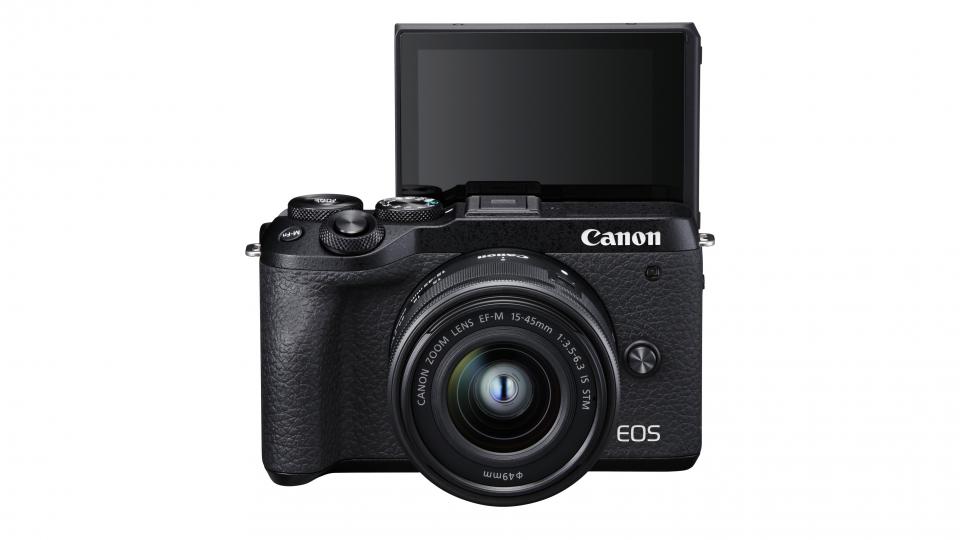
Few cameras embrace the reality of modern-day media production like the M6 Mark II. Its small and light enough to be totally unobtrusive, thanks to its mirrorless design and compact EF-M mount, but still offers enough flexibility and manual control for experienced users to get the best from it.
It shoots capable stills, at 32.5 megapixels, up to 14 times per second, and at good quality at a very good range of ISOs we were still seeing usable results at up to ISO 3200. But it also manages great quality 4K video, albeit at a limited range of frame rates and with no log or headphone support. We do like the lenses Canon makes for the EF-M mount, which by and large use ultra-quiet stepper motors which allow you to use autofocus mid-take.
Impressively, the whole caboodle weighs only 408g before you add a lens, which makes it a superb addition to a kit bag that can ill-afford the weight and bulk of a real DSLR, or a great addition to the bag of a pro this is a smashing camera to whip out in places something bigger would be intrusive.
Canon EOS M6 Mark II | Read our full review | |
|---|---|
| Key specs: 32.5-megapixel, APS-C sensor; 143 autofocus points | Shutter and ISO speed range: 0sec 1/4,000th + bulb; 14fps burst mode; 100-51,200 ISO range |
| Video modes: 720p at 50, 59.94fps; 1080p at 25, 29.97, 50, 59.94, 100, 119.88fps; 4K at 25, 29.97fps | Connectivity: USB-C; 802.11b/g/n wireless; Bluetooth; micro-HDMI; GPS-N |
| Memory card: SD/SDHC/SDXC | Battery life: 410 shots |
| Dimensions: 120 x 49 x 70mm (WDH) | Weight: 408g without lens |
8. Canon G7 X Mark II: The ultimate pocket-sized camera
Price: £489( | Buy now from Amazon

The G7 X Mark II is ideal for holidays and expeditions where a big camera is impractical, while SLR and CSC owners may want to get one as a pocketable backup camera.
Photo quality is the star attraction and its about as good as it gets from a pocket-sized camera. Colours are rich and vibrant, with plenty of detail in its 20-megapixel files. The combination of the 1in sensor, f/1.8-2.8 lens and carefully controlled noise reduction in JPEGs knocks the ball out of the park in low light.
The rubber grip is only a few millimetres deep but theres a well-defined ridge thats unlikely to slip through fingers. Theres also a small lever beside the lens that lets you choose whether the lens ring has a smooth or ratcheted motion. The former makes more sense for autofocus adjustments while the latter is better for aperture adjustment.
For most purposes, the controls are quick and intuitive. Theres a chunky exposure compensation dial on the top plate, and the touchscreen makes light work of moving the autofocus point, as well as being vari-angle, so you can use it to shoot over and under obstacles. Continuous JPEG shooting is at 8fps for 30 frames before slowing to 5fps, which is superb.
Our only hesitation is battery life, which at 240 shots means youll want to keep the charger handy if youre away for more than a day or so, but virtually everything else about the G7 X Mk II is seriously impressive.
Canon G7X Mark II | Read our full review | |
|---|---|
| Key specs: 20.1-megapixel, 1.0-type sensor; 31 autofocus points; 3in vari-angle touchscreen monitor | Shutter and ISO speed range: 30sec 1/16,000th + bulb; 12fps burst mode; 100-25,600 ISO range |
| Video modes: 720p at 25, 29.97fps; 1080p at 23.98, 25, 29.97, 50, 59.94fps | Connectivity: USB; 802.11b/g/n wireless; NFC; micro-HDMI micro; GPS via linked smartphone |
| Memory card: SD/SDHC/SDXC | Battery life: 240 shots |
| Dimensions: 106 x 42 x 61mm (WDH) | Weight: 319g without lens |














